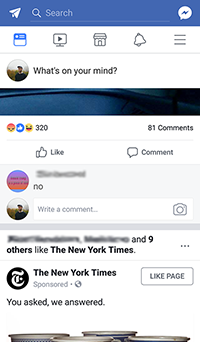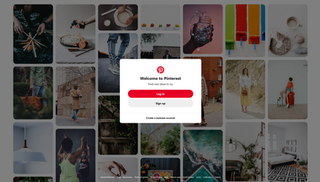Social shopping is a method of e-commerce where shoppers' friends become involved in the shopping experience. Social shopping attempts to use technology to mimic the social interactions found in physical malls and stores. With the rise of mobile devices, social shopping is now extending beyond the online world and into the offline world of shopping.

Mobile social networking is social networking where individuals with similar interests converse and connect with one another through their mobile phone and/or tablet. Much like web-based social networking, mobile social networking occurs in virtual communities.
Social commerce is a subset of electronic commerce that involves social media and online media that supports social interaction, and user contributions to assist online buying and selling of products and services.
Social network advertising, also social media targeting, is a group of terms that are used to describe forms of online advertising/digital marketing that focus on social networking services. One of the major benefits of this type of advertising is that advertisers can take advantage of the users' demographic information and target their ads appropriately.

Livestreaming is streaming media simultaneously recorded and broadcast over the internet in real-time or near real-time. It is often referred to simply as streaming. Non-live media such as video-on-demand, vlogs, and YouTube videos are technically streamed, but not live-streamed.
An Internet celebrity is a celebrity who has acquired or developed their fame and notability on the Internet. The rise of social media has helped people increase their outreach to a global audience. Today, internet celebrities are found on popular online platforms such as Facebook, YouTube, Instagram, WeChat, TikTok, QQ, Snapchat, Telegram, Twitter, Twitch, and Reddit.

Social media marketing is the use of social media platforms and websites to promote a product or service. Although the terms e-marketing and digital marketing are still dominant in academia, social media marketing is becoming more popular for both practitioners and researchers. Most social media platforms have built-in data analytics tools, enabling companies to track the progress, success, and engagement of ad campaigns. Companies address a range of stakeholders through social media marketing, including current and potential customers, current and potential employees, journalists, bloggers, and the general public. On a strategic level, social media marketing includes the management of a marketing campaign, governance, setting the scope and the establishment of a firm's desired social media "culture" and "tone."
Social media in the fashion industry refers to the use of social media platforms by fashion designers and users to promote and participate in trends. Over the past several decades, the development of social media has increased along with its usage by consumers. The COVID-19 pandemic was a sharp turn of reliance on the virtual sphere for the industry and consumers alike. Social media has created new channels of advertising for fashion houses to reach their target markets. Since its surge in 2009, luxury fashion brands have used social media to build interactions between the brand and its customers to increase awareness and engagement. The emergence of influencers on social media has created a new way of advertising and maintaining customer relationships in the fashion industry. Numerous social media platforms are used to promote fashion trends, with Instagram and TikTok being the most popular among Generation Y and Z. The overall impact of social media in the fashion industry included the creation of online communities, direct communication between industry leaders and consumers, and criticized ideals that are promoted by the industry through social media.
THE YES is a retail app and platform that focuses on women's fashion and clothing. Its algorithms analyze user data in order to optimize product personalization. THE YES has headquarters in New York City and Silicon Valley, California.

Instagram is a photo and video sharing social networking service owned by American company Meta Platforms. The app allows users to upload media that can be edited with filters and organized by hashtags and geographical tagging. Posts can be shared publicly or with preapproved followers. Users can browse other users' content by tag and location, view trending content, like photos, and follow other users to add their content to a personal feed.

Pinterest is an American image sharing and social media service designed to enable saving and discovery of information on the internet using images and, on a smaller scale, animated GIFs and videos, in the form of pinboards. The site was created by Ben Silbermann, Paul Sciarra, and Evan Sharp, and had 463 million global monthly active users as of April 2023. It is operated by Pinterest, Inc., based in San Francisco.
Joseph Einhorn is an entrepreneur and businessperson who is best known as the founder and CEO of the company Fancy, a social e-commerce platform. Fancy describes itself as "part store, blog, magazine and wish list," and Einhorn has said that it seeks to redefine the shopping experience. Fancy was valued at $600 million by American Express, Billionaire Len Blavatnik, Actor Will Smith and other investors on July 3, 2013. In February 2015, Einhorn's company Fancy raised a $20 million Series D strategic funding round which was led by Mexico's Carlos Slim Domit and the CCC holding company.
Depop is a peer-to-peer social e-commerce company based in London, with additional offices in Manchester, Milan and New York City. The company has an expanding global presence being popularised in countries such as the United States, United Kingdom, Australia, New Zealand, and Italy. It allows users to buy and sell items, most of which are used and vintage pieces of clothing.
Grabble was a fashion and lifestyle mobile commerce platform that currently operates on the iOS platform in the UK. Grabble shut down in 2018.
The wanghong economy [internet celebrity economy] refers to the Chinese digital economy based on influencer marketing through social media platforms. Wanghong is the Chinese term for internet celebrity. Chinese wanghong celebrities attract the attention of internet users, which can translate into profit through e-commerce and online advertising.

A fashion influencer is a personality that has a large number of followers on social media, creates mainly fashion content and has the power to influence the opinion and purchase behavior of others with their recommendations. Brands endorse them to attend fashion shows, parties, designer dinners and exclusive trips and to wear their clothes on social media. If a salary has been involved, the influencer may be required to label such posts as paid or sponsored content. Before social media "they would have been called 'It girls'".

Xiaohongshu is a social media and e-commerce platform. It has been described as "China's answer to Instagram".
Kumu is a Filipino video sharing and e-commerce social networking service owned and developed by Kumumedia Technologies, Inc. The social media platform is used to livestream curated programs created by app users and partner brands and as an e-commerce platform for app users and partner brands who want to sell their merchandise online. It was founded in 2017 and launched on Android and iOS devices in February 2018. Kumu caters mainly to the Philippine market and the Filipino diaspora. In October 2020, the app topped the download charts of both the Apple App Store and Google Play in the free apps category. The app aims to become a "super app" that combines the functionalities of other apps like YouTube, TikTok, Shopee, Instagram and Facebook Messenger into one. Kumu is considering adding offline events to its platform, such as fan meetings with popular livestreamers and a convention inspired by Comic-Con called Kumu-Con, and expand beyond livestreaming to e-commerce and payments.
Livestream shopping is used by brands to promote and sell products through livestreams on digital platforms, often in collaboration with influencers.
In social media, a story is a function in which the user tells a narrative or provides status messages and information in the form of short, time-limited clips from several automatically running sequences. A story is usually displayed on a user's profile page and thus represents an audiovisual extension to the text-based status function.






